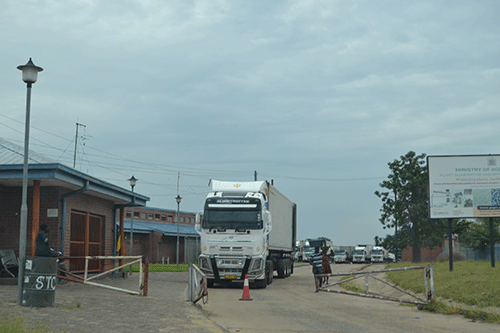KATIMA MULILO – The country’s two border posts at Ngoma and Katima Mulilo, as well as other legal entry points in the Zambezi region, recorded a total of 225 340 entries and 214 892 departures since August last year.
Zambezi governor Lawrence Sampofu said this during his annual state of the region address last week, where he said the highest figure was recorded at the Katima Mulilo border post.
He emphasised the need to revamp the facility to a one-stop-border post as well as a 24-hour operation. Sampofu said the region is strategically located at the heart of the Kavango Zambezi Transfrontier Conservation Area (KAZA) and plays a huge role in the economic advancement of the country.
He said the volume of cargo passing through Katima
Mulilo and Ngoma border posts using the Walvis Bay-Ndola-Lubumbashi Development Corridor has significantly and steadily increased, compared to the 2021/22 financial year, consequently overwhelming the existing border infrastructure.
“The re-opening of borders after Covid-19 resulted in an increase in overall imports and exports and and increase in the volume of cargo passing along the Walvis
Bay-Ndola-Lubumbashi Development Corridor to the Port of Walvis Bay.”
Sampofu also touched on forestry, which is another stream of economic activity, as Zambezi is home to diverse species of valuable trees. In terms of sustainably managing fisheries resources, Sampofu said fish poachers were apprehended and lawfully dealt with while confiscated items were destroyed.
He further reported that 463 asylum seekers were received, registered and transported to Osire Refuge Settlement. These are people coming from countries such as DRC, Rwanda, Burundi, Cameroon, Malawi, Zimbabwe, Chad, Tanzania, Ethiopia, Mozambique, and Uganda.
The governor said products collected from the forest under permit were 93 tonnes of firewood, 300 rafters, 935 poles, and 770 droppers both for commercial and use.
At least 3 527 different types of forest permits were issued to the public – both commercial and domestic use – and N$254 794 in revenue was generated from permits and seedlings for the government.
With a slight drop from the previous financial year, income-generating activities raked in N$324 000 as benefits to local communities in gazetted community forests.
Gazetted community forests of Lubuta, Masida, Sachona, Sikanjabuka, Zilitene, and Bukalo received grants of N$180 000 from the Community Conservation Fund of Namibia (CCFN) as support for forest protection and conservation. In addition, a N$910 000 grant was approved by the CCFN for enhancing a beekeeping and honey project at Sikanjabuka and Lubuta community forests.
Sampofu further noted that the 14 conservancies and one association generated an amount of N$37,5 million, compared to N$32,5 million in the previous year, while an amount of N$11,6 million was paid out to community members.
“Despite the above achievements, an amount of N$459 553.34 was unaccounted for within other conservancies,” said Sampofu.
– anakale@nepc.com.na


